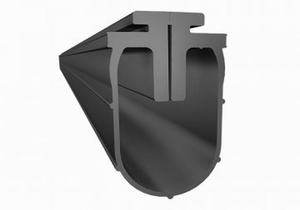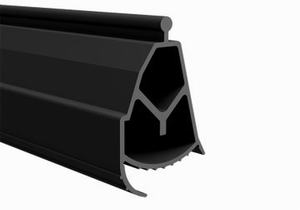Automatic door seals are innovative devices designed to provide efficient sealing for doors, offering a range of benefits including energy conservation, noise reduction, and enhanced indoor comfort. These seals are typically installed at the bottom or sides of doors and utilize advanced mechanisms to automatically engage when the door is closed, creating a tight seal against the doorframe.
The primary function of automatic door seals is to prevent the passage of air, sound, dust, moisture, and other elements between spaces separated by the door. By sealing the gaps around the door perimeter, they help maintain consistent temperatures within rooms, reduce heating and cooling costs, and improve overall energy efficiency in buildings. This is particularly important in environments where climate control is essential, such as residential homes, commercial buildings, hospitals, and industrial facilities.
In addition to energy savings, automatic door seals contribute to noise reduction by effectively blocking the transmission of sound waves through door gaps. This is beneficial in environments where privacy and tranquility are desired, such as offices, conference rooms, hotels, and residential areas.
The construction of automatic door seals typically involves durable materials such as rubber, silicone, or neoprene, chosen for their flexibility, resilience, and weather resistance. Some seals may also incorporate metal components for added strength and stability.
One of the key features of automatic door seals is their automatic activation mechanism, which ensures hassle-free operation without the need for manual adjustment. This mechanism may involve various technologies such as spring-loaded mechanisms, pneumatic systems, or motorized actuators, depending on the specific design and application requirements.
When the door is closed, the seal is automatically engaged, creating a tight barrier against drafts, drafts, and external elements. Conversely, when the door is opened, the seal retracts or releases, allowing unimpeded movement without causing friction or obstruction.
Automatic door seals are available in a variety of designs and configurations to accommodate different door types, sizes, and installation requirements. They may be surface-mounted, recessed, or integrated into the door frame, providing a discreet and seamless appearance that complements the overall aesthetics of the door and surrounding architecture.
Furthermore, automatic door seals are often designed to meet industry standards and building codes for fire safety, accessibility, and environmental performance. They undergo rigorous testing to ensure reliability, durability, and long-term functionality in diverse operating conditions.
In summary, automatic door gaskets offer a convenient and effective solution for sealing doors, providing numerous benefits including energy efficiency, noise reduction, and enhanced comfort. With their advanced design, automatic activation mechanism, and versatile applications, they are an essential component in modern buildings aiming to optimize performance and sustainability.










